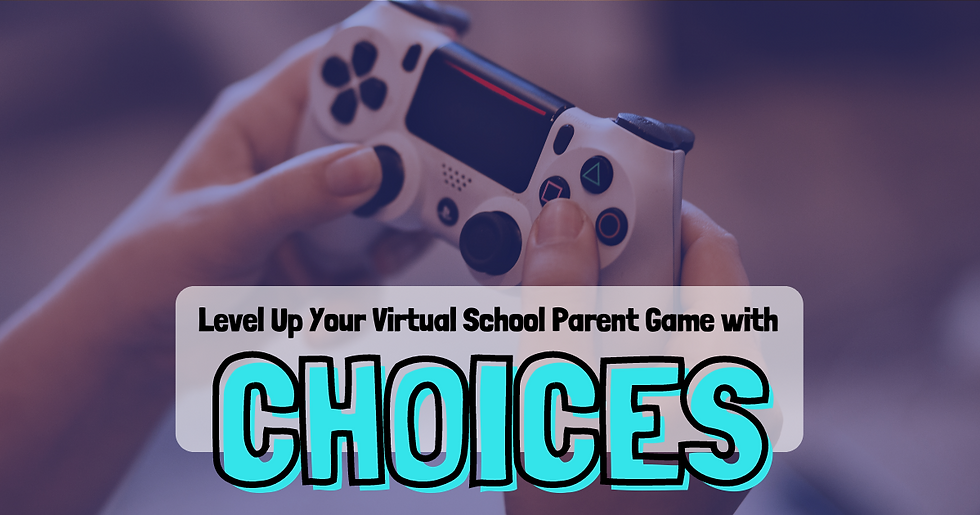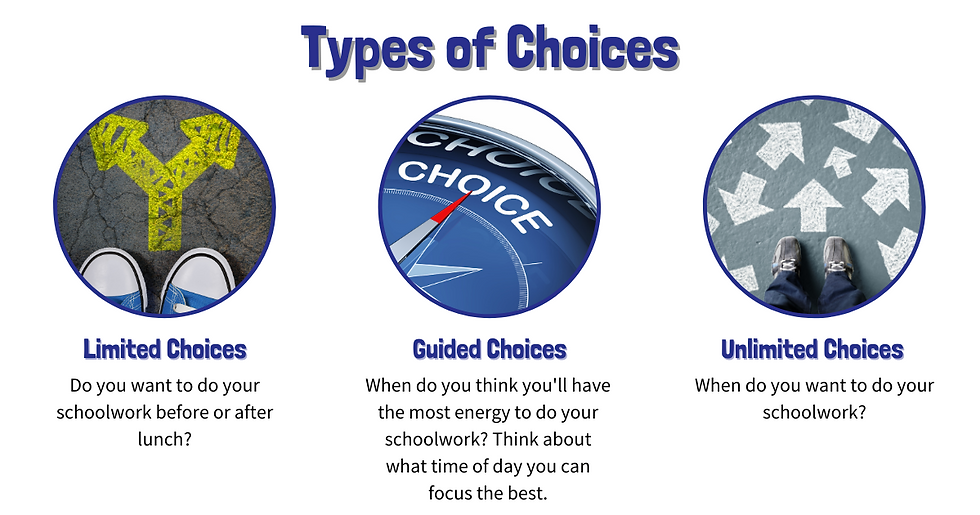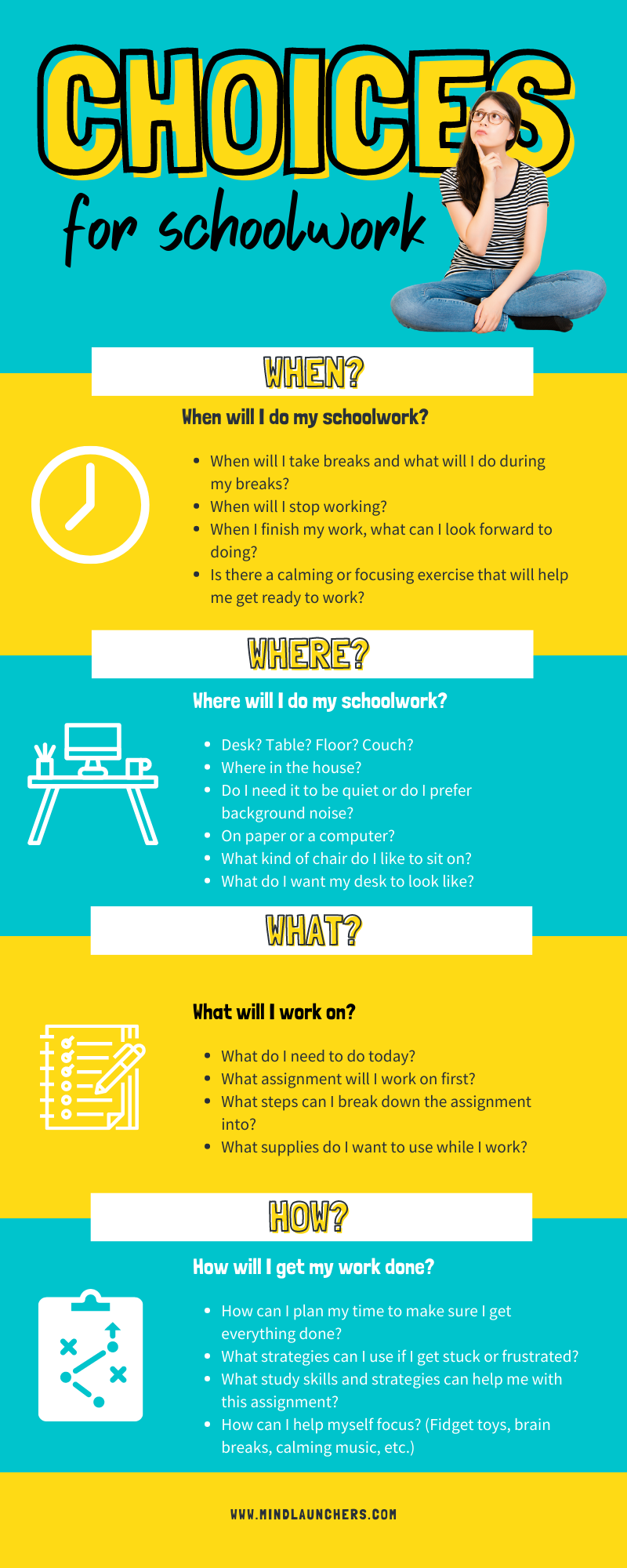Level Up Your Virtual School Parenting Game with Choice

If you've ever spent more than a few minutes with a toddler, then you very likely at some point had a eureka moment when you realized that children are much more likely to cooperate if given a choice. Do you want to wear your red shirt or your blue shirt will work much better than just handing them a shirt and saying put it on.
The pandemic has taken away a lot of the choices our children normally get to make. It has dictated whether or not they go to school in person, who they can socialize with, how they can socialize (6 feet apart and with masks? Online only?), and how they are supposed to learn this year (on a computer for many of them). Many of our children are struggling right now with feelings of powerlessness and an utter lack of control over the situation they find themselves in. These feelings are likely at least a part of the resistance you see to virtual school. Like all of us, they are still mourning for the way things used to be.
Now more than ever, we need to make a conscious effort to provide opportunities for our children to make choices and exercise some level of control over their lives.
In fact, I would go so far as to say that the parent who knows how to use choice has discovered a true parenting superpower. When you provide choices effectively, you are:
increasing cooperation
increasing independence and self-confidence
developing executive function skills such as planning, prioritizing, flexible thinking, self-regulation, and metacognition (did I make the right choice or not?)
Sounds pretty good, right? Now some of you might be thinking, “Well my kid is only 8. He doesn’t know enough to make good choices.” And perhaps not, but if we don’t let him start to practice now, how is he suddenly going to know enough to make good choices when he moves out at 18? Halloween candy is a perfect example of this. You likely came across articles and social media posts from nutritionists reminding us that if you strictly regulate what and how much candy your child gets to eat, you're setting your child up for an unhealthy relationship with sweets. Instead, if you let your child make choices about Halloween candy, then he will begin to develop self-regulation skills and will be less likely to make unhealthy nutrition decisions when he's not under your watchful eye.
Here’s the thing—the older our children get, the more is at stake for when they make a bad decision, so we want to give them that practice now when the stakes are relatively low and we can support them in reflecting on the decisions they made. If your child gets a tummy ache from eating too much Halloween candy, with a little help from you to reflect on cause and effect, she most likely will learn from the experience.
So does this mean we wipe our hands and walk away to observe from a distance? Not at all! The level of independence you give really depends on the age of your child and what’s at stake. The kinds of choices you provide exist on a sort of spectrum like you see here:

If in the past you made almost all of the choices for your child, then you'll most likely want to start off with limited choices. As your child becomes a more competent and confident decision maker, you can advance to experimenting with guided choices and perhaps even unlimited choices in certain situation.
The key here is that as much as possible, you are offering some kind of choice. Of course there are some non-negotiable parts of the day. If Zoom class is scheduled for 11:00, your child can't really "choose" to do it at 2:00 instead (or skip it altogether!). But your child can make other decisions related to that Zoom class such as what kind of pen he would like to use during class, what kind of chair he'd like to sit on (or no chair at all), if there's a snack he'd like to eat before or during class, or if there's a fidget toy that will help him focus during class.
Our tendency as parents is to micromanage our children's day, particularly when it comes to academics. Teachers, myself included, are guilty of this as well. We often dictate what to do, when to do it, and how to do it. But think of all the learning opportunities our children are missing out on by not being able to answer at least some of those questions themselves. Someday, whether that's in high school, college, or the workplace, our children will find themselves without someone looking over their shoulder and micromanaging their every move. Will they be ready to make all of those decisions on their own or will they crumple under the pressure?
Ready to level up your parenting game with choices?
1. Take a moment and consider the kinds of choices your child gets to make during a typical day. Does he or she have a lot or very little control over the day? What areas can you build in more opportunities for decision making? You might find that giving your child more control over non-school related parts of the day will result in more cooperation for the parts of the day that are less negotiable.
2. Identify the parts of the day that tend to see the most conflict and resistance. What kinds of choices can you offer to increase cooperation? (Do you want to clean up before or after lunch? Do you want to practice multiplication outside or inside?)
3. Practice letting your child make more choices when it comes to his or her schoolwork.
Here is a list of some of the possible choices your child can make related to schoolwork:

Want a PDF printable of this infographic? Click here.
By giving your child these choices, not only are you providing that crucial practice in decision-making, you're also providing strategic support by asking questions that will guide her in discovering her own unique learning preferences.
Be sure to help your child reflect on his or her choice afterwards. Ask neutral questions like, "How did that work out?" If your child decides that the choice wasn't the best one, guide him in considering alternatives to try out next time.
Ready to level up your parenting game with choices this week? Pick an area you can give your child a choice in and give it a try. Do you notice a change in his or her behavior or engagement as a result?


Comments